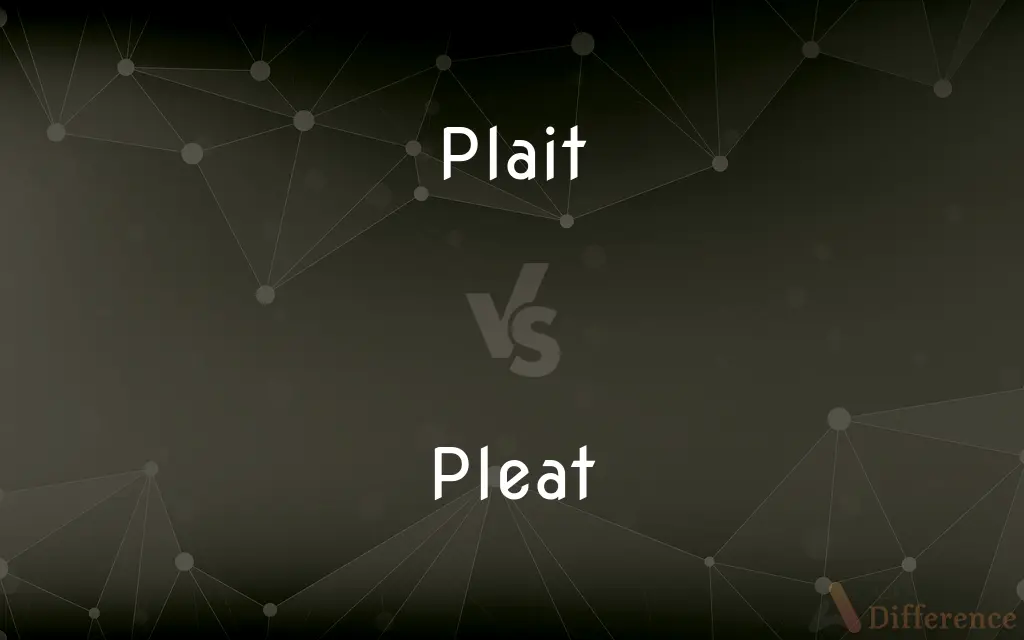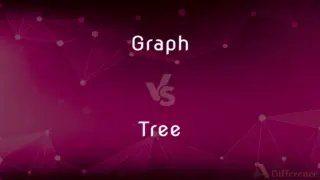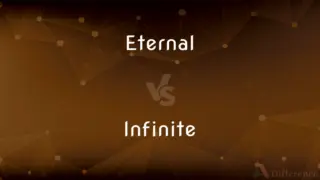Plait vs. Pleat — What's the Difference?
By Tayyaba Rehman & Maham Liaqat — Updated on April 5, 2024
Plait refers to a pattern of interweaving strands of hair or material, while pleat involves folding fabric in a way that creates a pattern or design.

Difference Between Plait and Pleat
Table of Contents
ADVERTISEMENT
Key Differences
Plaiting involves the process of interweaving three or more strands of flexible material, such as hair, yarn, or straw, to create a cohesive structure. This technique is commonly used in hairstyling, where sections of hair are intertwined to form a braid. In contrast, pleating refers to the technique of folding fabric in a specific manner to create a decorative or functional design, such as in clothing or drapery. Pleats are often sewn into place to hold their shape and can vary in width, depth, and style.
While plaits are primarily associated with the creation of braids in hair or the weaving of materials for crafts, pleats are specifically related to fabric manipulation. Plaiting can create a variety of patterns depending on the number of strands used and the method of interlacing, leading to styles like the French braid, Dutch braid, or fishtail braid. Pleats, however, are characterized by their method of folding, resulting in styles like knife pleats, box pleats, or accordion pleats, each offering a different visual and functional effect in garments or textiles.
The purpose of plaiting often revolves around fashion, functionality, and decoration in hairstyles or craft items. It can secure hair out of the face, create aesthetic appeal, or be used in making baskets and other items. Pleating, on the other hand, can serve to control fullness in garments, add decorative elements, or provide flexibility and ease of movement, demonstrating its versatility in fashion and interior design.
Tools and techniques for plaiting and pleating also differ. Plaiting hair or materials doesn't necessarily require any tools other than one's hands for manipulation. In contrast, creating pleats in fabric often involves sewing equipment, ironing tools to press the folds, and sometimes even specific machinery for precise, uniform pleats in mass-produced items.
The choice between plaiting and pleating depends on the medium (hair, yarn, fabric) and the desired outcome (style, functionality, decorative appeal). While plaiting adds texture and interest through intertwined strands, pleating achieves similar goals through folds, highlighting the unique characteristics and applications of each technique.
ADVERTISEMENT
Comparison Chart
Definition
Interweaving strands to create a cohesive structure.
Folding fabric in a specific manner for design.
Materials
Hair, yarn, straw.
Fabric.
Purpose
Fashion, functionality, decoration.
Control fullness, add decoration, provide flexibility.
Techniques
French braid, Dutch braid, fishtail braid.
Knife pleats, box pleats, accordion pleats.
Tools
Hands.
Sewing equipment, ironing tools.
Compare with Definitions
Plait
Often used in crafting to create baskets and decorations.
The artisan plaited the straw into durable baskets for the market.
Pleat
Requires precision in folding and sewing.
Making a pleated dress requires careful measurement and ironing.
Plait
The act of braiding or weaving strands together.
She learned to plait her daughter's hair into a beautiful braid.
Pleat
Often used in garments to allow for movement.
The pleated trousers provided comfort and flexibility.
Plait
Is seen as both a functional and decorative technique.
Plaiting the ropes provided a stronger hold for the climbing apparatus.
Pleat
A fold in fabric sewn or pressed into place.
The pleated skirt swayed beautifully as she danced.
Plait
Can refer to a single braid or multiple braids.
He wore a traditional hat adorned with plaited straps.
Pleat
Can vary in depth and width according to style.
The dress featured deep box pleats for added volume.
Plait
Can involve various numbers of strands for complexity.
The intricate plait required four strands instead of the usual three.
Pleat
Can be a decorative element in clothing and home décor.
She added pleats to the curtains for a more elegant look.
Plait
A single length of hair, straw, rope, or other material made up of three or more interlaced strands
She wore her dark hair in plaits
Pleat
A pleat (older plait) is a type of fold formed by doubling fabric back upon itself and securing it in place. It is commonly used in clothing and upholstery to gather a wide piece of fabric to a narrower circumference.Pleats are categorized as pressed, that is, ironed or otherwise heat-set into a sharp crease, or unpressed, falling in soft rounded folds.
Plait
Archaic term for pleat
Pleat
A fold, especially one of several parallel folds made by doubling cloth or other material on itself and then pressing or stitching it into place.
Plait
Form (hair, straw, rope, or other material) into a plait or plaits
Her hair had been plaited and coiled at the back of her head
Pleat
To press or arrange in pleats
Pleat a skirt.
Pleat curtains.
Plait
A braid, especially of hair.
Pleat
(sewing) A fold in the fabric of a garment, usually a skirt, as a part of the design of the garment, with the purpose of adding controlled fullness and freedom of movement, or taking up excess fabric. There are many types of pleats, differing in their construction and appearance.
Plait
A pleat.
Pleat
(botany) A fold in an organ, usually a longitudinal fold in a long leaf such as that of palmetto, lending it stiffness.
Plait
To braid.
Pleat
A plait.
Plait
To pleat.
Pleat
(transitive) To form one or more pleats in a piece of fabric or a garment.
Plait
To make by braiding.
Pleat
To plait.
Pleat my hair
Plait
A flat fold; a doubling, as of cloth; a pleat.
A box plait
Pleat
See Plait.
Plait
A braid, as of hair or straw; a plat.
Pleat
Any of various types of fold formed by doubling fabric back upon itself and then pressing or stitching into shape
Plait
(transitive) To fold; to double in narrow folds; to pleat
To plait a ruffle
Pleat
Pleat or gather into a ruffle;
Ruffle the curtain fabric
Plait
(transitive) To interweave the strands or locks of; to braid
To plait hair
Plaiting rope
Pleat
Fold into pleats,
Pleat the cloth
Plait
A flat fold; a doubling, as of cloth; a pleat; as, a box plait.
The plaits and foldings of the drapery.
Plait
A braid, as of hair or straw; a plat.
Plait
To fold; to double in narrow folds; to pleat; as, to plait a ruffle.
Plait
To interweave the strands or locks of; to braid; to plat; as, to plait hair; to plait rope.
Plait
A hairdo formed by braiding or twisting the hair
Plait
Any of various types of fold formed by doubling fabric back upon itself and then pressing or stitching into shape
Plait
Make by braiding or interlacing;
Lace a tablecloth
Plait
Weave into plaits;
Plait hair
Common Curiosities
Are pleats only found in clothing?
No, pleats are also used in home décor, like curtains, and in other fabric-based items.
Is plaiting a skill?
Yes, plaiting requires skill and practice, especially for more complex patterns.
How do I maintain the shape of pleats in clothing?
Ironing and sometimes starching can help maintain pleat shape, as can careful washing and drying.
What is the primary difference between a plait and a pleat?
A plait involves interweaving strands, while a pleat involves folding fabric.
Can plaiting be used in fabric?
Yes, plaiting can be applied to fabric, typically in decorative trims or craft projects.
Do pleats add bulk to clothing?
Pleats can add volume and fullness, but careful design can manage and distribute this effectively.
Can anyone learn to plait?
With practice, most people can learn basic plaiting techniques, though more complex styles may require more skill.
What's the best way to learn plaiting techniques?
Practice, tutorial videos, and workshops can all be effective ways to learn plaiting.
Do plaited hairstyles have practical benefits?
Yes, they can keep hair tidy, protect hair from damage, and be a cool option in hot weather.
How are pleats made in mass-produced clothing?
Industrial pressing and sewing machines are used to create uniform pleats in large quantities of garments.
Why would someone choose a plaited design?
For its aesthetic appeal, traditional significance, or functional benefits like strength and flexibility.
What kind of pleat is best for slimming effects in clothing?
Knife pleats, because of their narrow, close-together folds, tend to create a slimming effect.
How do I choose between a plaited or pleated design?
Consider the medium (hair or fabric), the desired outcome, and the practicality of maintaining the style.
Can pleats be permanent?
Permanent pleats are possible with certain fabrics and treatments, though they may still require care to maintain.
Are there cultural significances to plaiting?
Yes, plaiting has cultural significance in many societies, often associated with traditional crafts and hairstyles.
Share Your Discovery

Previous Comparison
Graph vs. Tree
Next Comparison
Eternal vs. InfiniteAuthor Spotlight
Written by
Tayyaba RehmanTayyaba Rehman is a distinguished writer, currently serving as a primary contributor to askdifference.com. As a researcher in semantics and etymology, Tayyaba's passion for the complexity of languages and their distinctions has found a perfect home on the platform. Tayyaba delves into the intricacies of language, distinguishing between commonly confused words and phrases, thereby providing clarity for readers worldwide.
Co-written by
Maham Liaqat













































